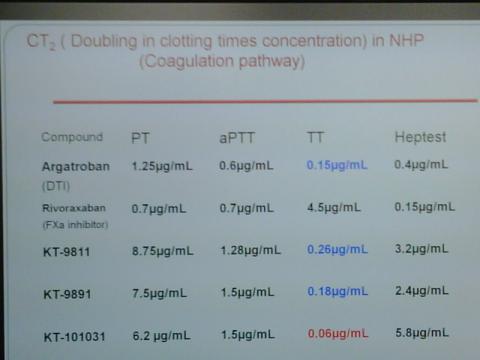How you present something can make all the difference in the world. Here are two films based off the novel I am Legend (1954) by American writer Richard Matheson.
I AM LEGEND (2007)
OMEGA MAN (1971)
Concise lecture on hemostasis, development & triggers. Unfortunately, many listeners may not have the background needed to 'follow' the entire pitch especially if they are out of medical school for years. Here is a refresher:
But the real question is how can you make this enticing even for those who don't have the background or complete memory. Also how do you do it in 8 minutes?
The following slides indicate that a unique company named Kardiatech has submitted their patent application with the following abstract:
"Pharmaceutical compositions and methods for treating vascular disorders or conditions comprising the combination of triflusal or a metabolite thereof and a second active agent selected from the group consisting of a GPIIb/IIIa inhibitor, an ADP receptor antagonist, a phosphodiesterase inhibitor and a selective serotonin reuptake inhibitor. At least one anticoagulant and/or thrombolytic agent are optionally present. The preferred vascular condition treated is stroke."
The problem is you have literally an audience that can become irritated especially if the opportunity for business, discussions etc etc are struggling to understand what you're trying to tell them.
Here is a phenomenal breakthrough that is presented in a round about way.
The key here is they have created Flurenox as a unique combination which allows the effect of blood thinning (reduced coagulation) without excessive bleeding. This remarkable result would easily go right over someone's head if it is not presented properly.
In this slide, the discuss aspirin's unique qualities but unfavorable side effect being bleeding.
Then the drug Aggrenox is shown to provide a comparable of >$200M USD revenue generating example where Boehringer Ingelheim combined two known molecules and resulted in a higher efficacy drug yet still resulting in bleeding.
High bleeding profiles should be highlighted here and discussed in great detail as the "key" issue and "opportunity" that is needed by patients, doctors, etc etc.
Here is where much of the problems lie. The video that is included up top does not come with the presentation. Even that video doesn't dive into the laboratory results. This makes it extremely difficult for the listener (banker, investor, potential business partner, clinician) to become excited.
Definitions are lacking (here I've included them)
Prothrombin time ( PT ) is a blood test that measures the time it takes for the liquid portion (plasma) of your blood to clot.
Partial thromboplastin time (PTT) or activated partial thromboplastin time ( aPTT or APTT) is a performance indicator measuring the efficacy of both the contact activation pathway (once called intrinsic pathway) and the common coagulation pathways.
Thrombin Time
(TT) assay is a core test in clinical laboratories
that perform coagulation testing. This assay screens for abnormalities
in the conversion of fibrinogen to fibrin. The time necessary
for fibrinogen to clot is affected by hypofibrinogenemia, dysfibrinogenemia,
and the presence of inhibitors of the fibrinogen-to-fibrin reaction
(heparin, hirudin, fibrin degradation products, and paraproteins). The TT is used primarily to evaluate plasma specimens with prolonged
activated partial thromboplastin time (APTT) values and, to
a lesser extent, prolonged prothrombin (PT) values for
heparin or other thrombin inhibitors.Finally, some form of the coagulation pathway with references
should be included in the slide presentation:

This next slide show cases the remarkable effects of KT-9811, KT-9891 and KT-101031 and lacks definitions.
There should be a short description as follows:
Initial damage to blood vessel walls expose subendothelium proteins (ie von Willebrand factor) which lie under the endothelium. When the underlying vWF is exposed to blood, it recruits Factor VIII, collagen and other clotting factors. Circulating platelets then bind to collagen with surface collagen-specific glycoprotein Ia/IIa receptors. This adhesion is then strengthened by additional vWF linking platelet glycoprotein Ib/IX/V and the collagen fibrils. It is these adhesions that activate the platelets.
During the platelet activation cascade, activated platelets will release contents inside their stored granules into the blood plasma. The granules consist of ADP (adenosine diphosphate), 5-HT (serotonin), PAF (platelet activating factor), vWF (vonWillebrand activative factor), platelet factor 4, and TXA 2(thromboxane A 2)
AA Arachidonic Acid is converted to PGH2 by COX (cyclooxgenases). PGH2 is converted to by thromboxane A 2 synthase to TXA 2.
Provisional filing should also be included in the back.
要盡心, 盡性, 盡意, 盡力愛主你的神 和愛人如己(Luke 10:27 NIV Bible) Dr. Gordon & Yourself: Solutions Together http://www.gordonyourself.com. GY BLOG via AnD/google is the